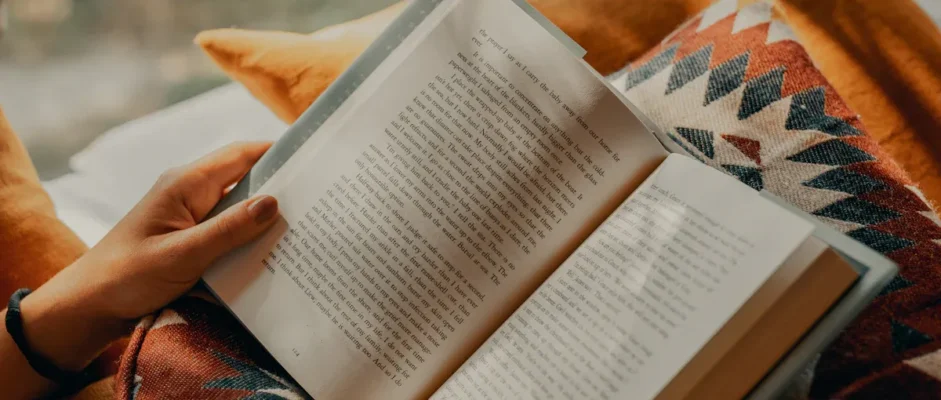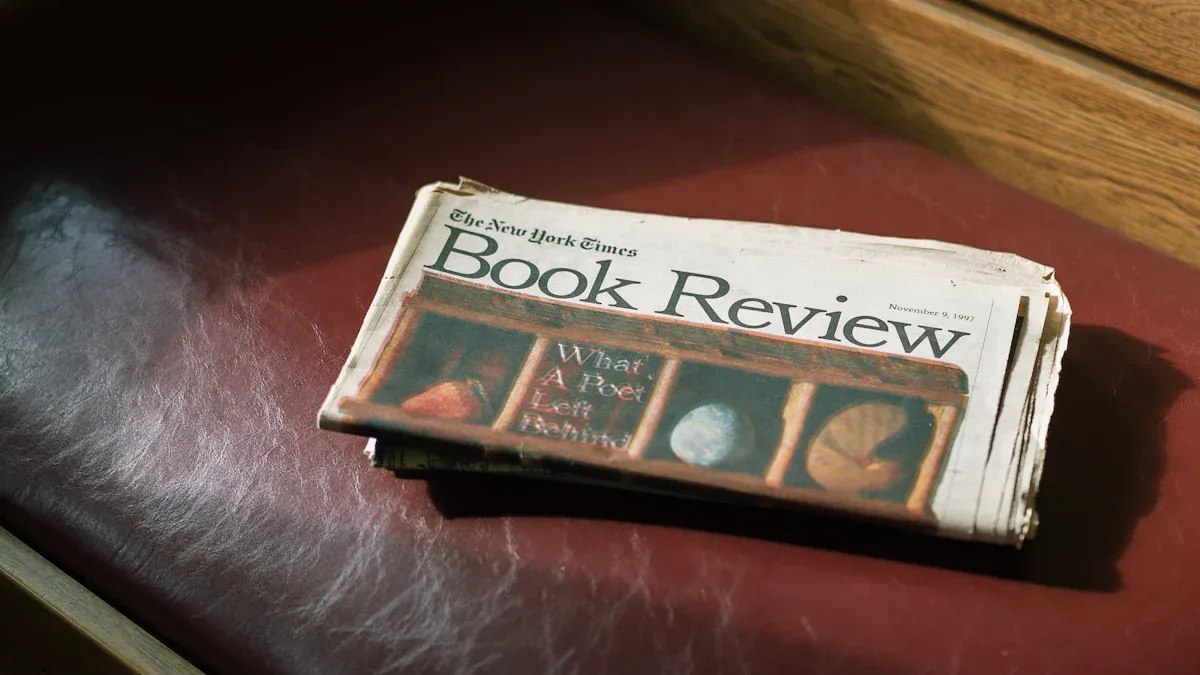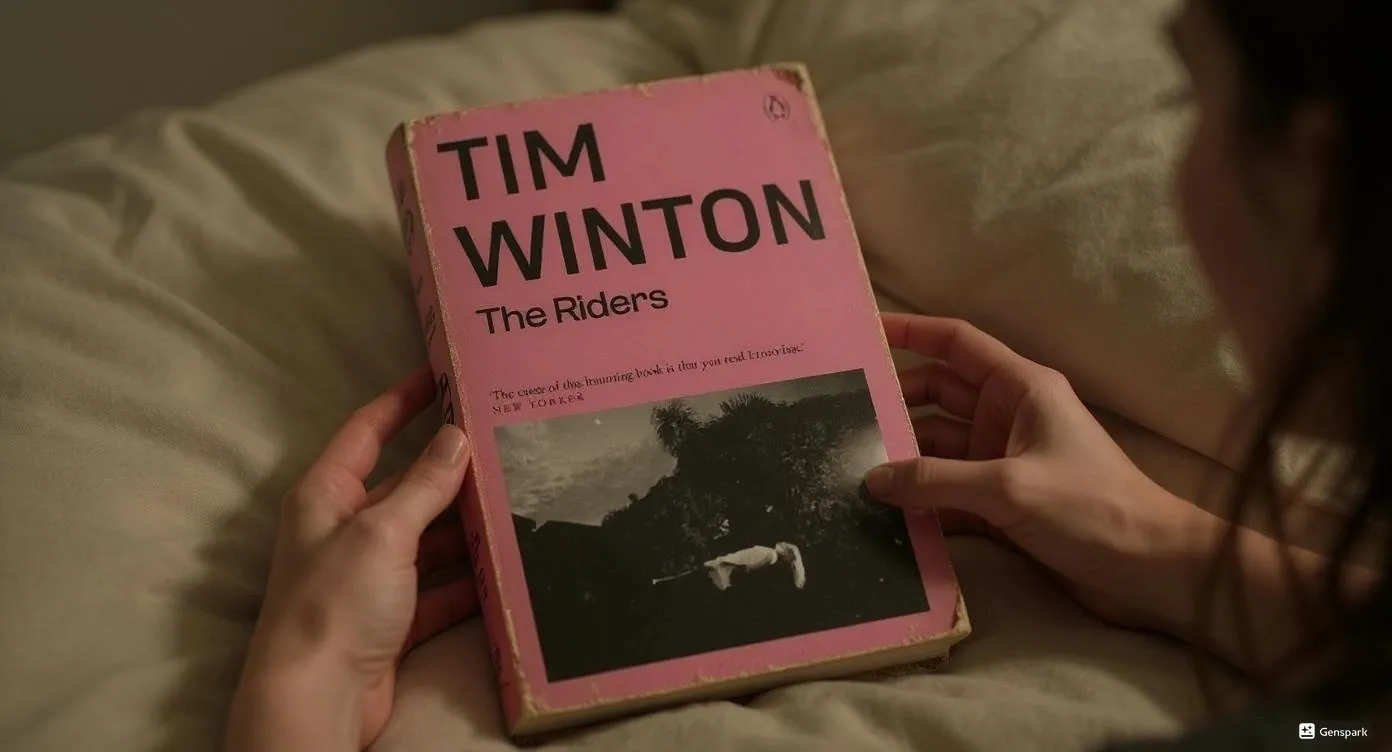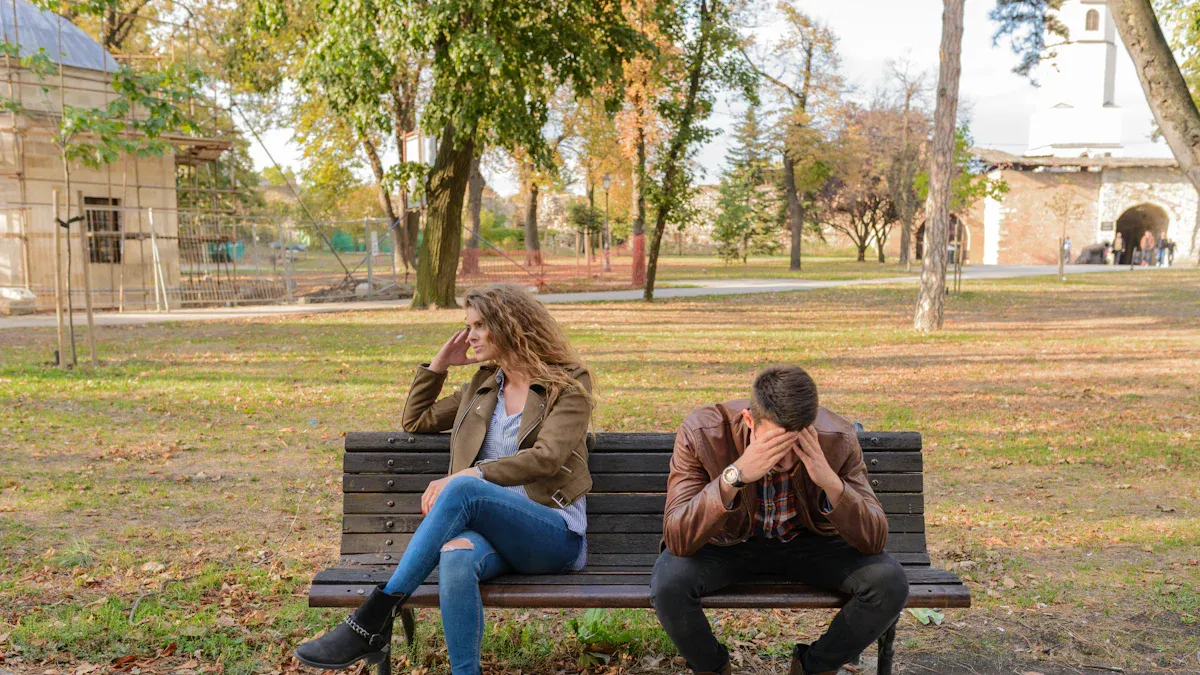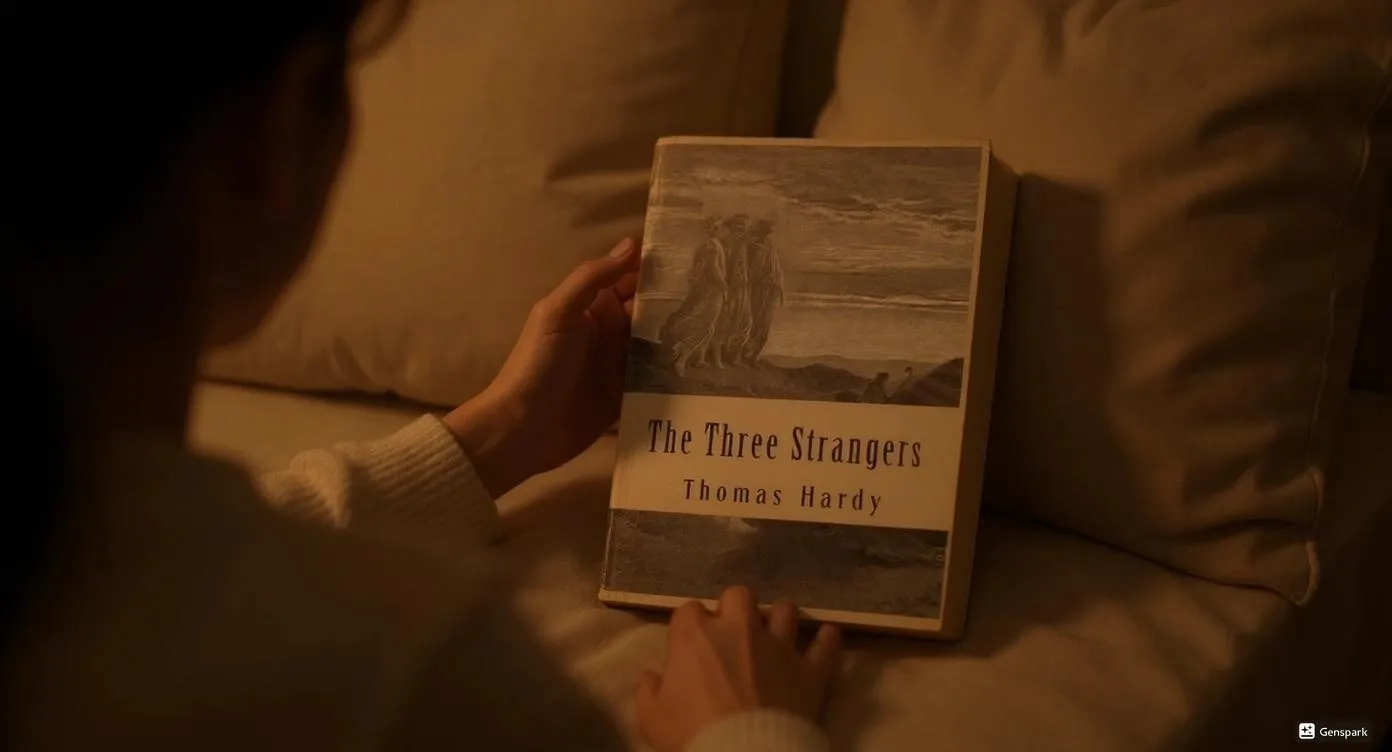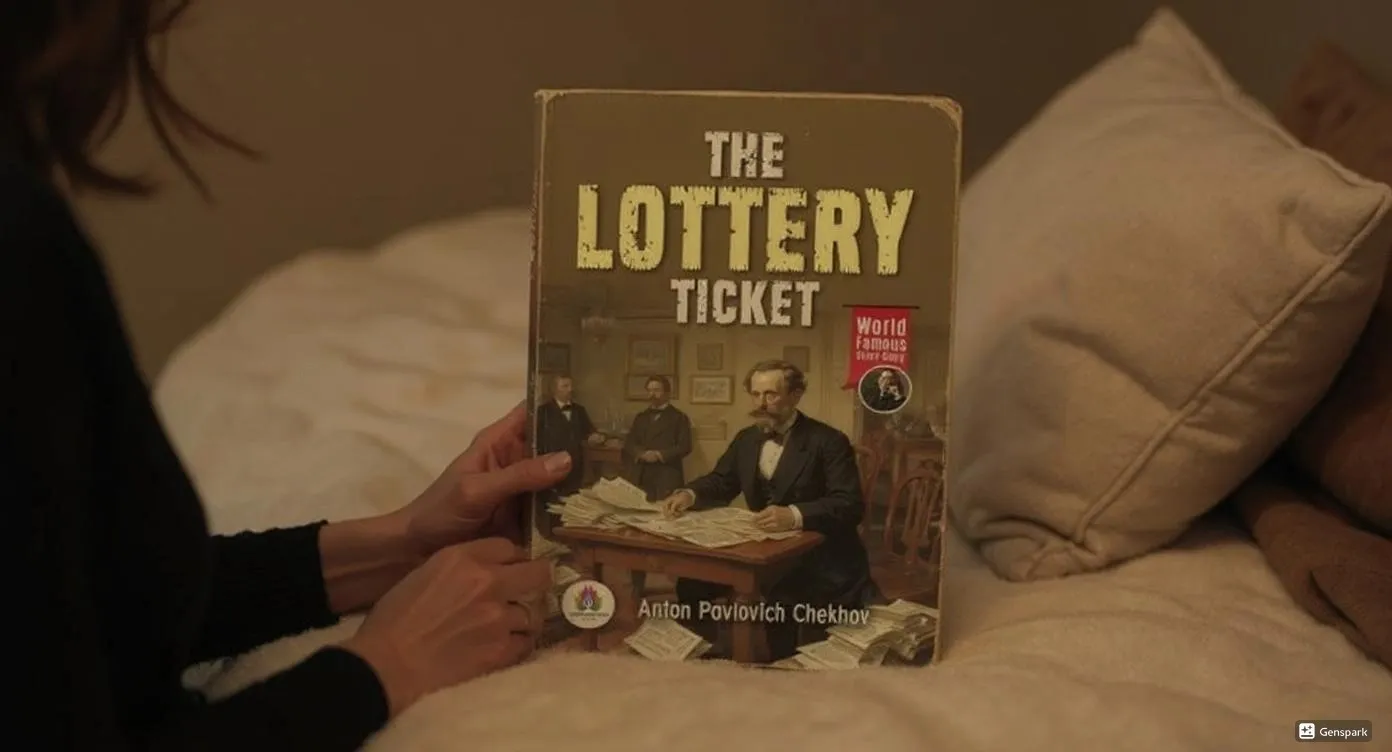I’ll be honest—What Kind of Paradise by Janelle Brown kept me reading late at night, even when my eyes felt dry and tired. If you like stories about family secrets, our tricky use of technology, and some suspense that keeps you guessing, this book is worth your time. I have to give credit to Brown for making a story that feels modern and a little scary.
I keep my reviews light on spoilers because, let’s be real, no one wants the big surprises ruined. Studies even show that readers like reviews that help them choose without giving away too much. For people who like smart and emotional thrillers, I’d say yes—even though it’s not perfect, it’s a story you won’t forget.
Key Takeaways
What Kind of Paradise is a slow story about family secrets, trust, and growing up. Jane is the main character. She feels real and easy to understand.
She faces hard choices and learns to forgive. The book shows how technology can help people connect. It also shows how it can make people feel alone. The story takes place in a community away from the city. This makes the story feel quiet but tense.
The story mixes growing-up moments with slow suspense. The suspense keeps you interested. Family relationships in the book are honest and messy. They show both love and pain.
The ending leaves some questions unanswered. This makes the story feel like real life. If you like stories about identity, forgiveness, and secrets, you should read this book.
Overview
Let me set the scene for you. What Kind of Paradise drops us into a world that feels both familiar and unsettling. The story follows Jane, a teenager who lives off the grid with her father, Saul. They hide away in a remote, tech-free community, far from the chaos of modern life.
I found myself picturing their little cabin, surrounded by trees and silence, with only the occasional buzz of a distant phone signal to remind them of the outside world. Jane’s life seems simple, but it’s clear from the start that secrets lurk beneath the surface.
When Jane stumbles upon a shocking discovery, her quiet world unravels. I won’t spoil what she finds, but trust me, it’s the kind of twist that makes you sit up straighter in your chair.
Plot
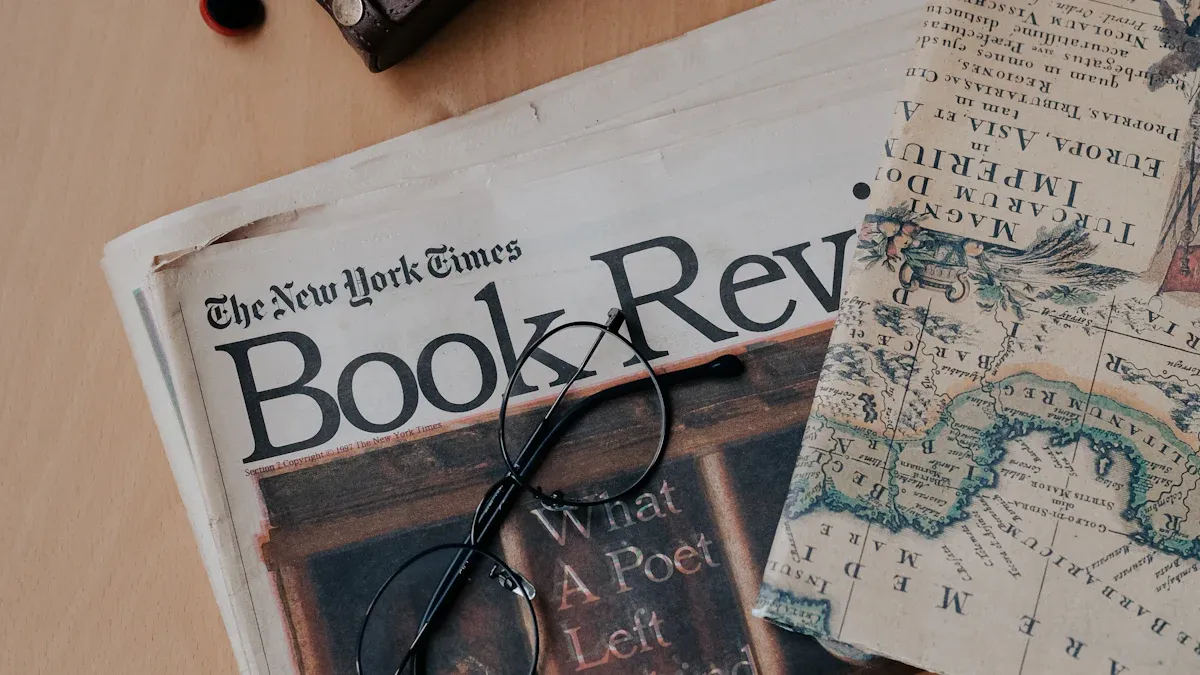
Setup
I have to admit, I love a good story that starts with a secret. What Kind of Paradise opens with Jane and her dad, Saul, living in a place that feels almost like a time capsule. No buzzing phones, no endless scrolling, just trees, quiet, and the occasional creak of their old cabin.
I could almost smell the pine needles and hear the crunch of gravel under Jane’s boots. Their world feels safe, but also a little lonely. Jane spends her days helping Saul, reading old books, and wondering what life is like beyond the woods. I found myself thinking about how I’d survive without Wi-Fi—spoiler: not well.
Note: If you’ve ever dreamed of running away from the noise of the world, Jane’s life might sound like paradise. But, as I quickly learned, paradise comes with its own shadows.
Conflict
And then… everything changes. Jane stumbles on something that flips her world upside down. I won’t spoil the details, but let’s just say it’s the kind of discovery that makes you question everything you thought you knew about your family. Suddenly, Jane’s safe bubble bursts. She starts to see cracks in her father’s stories and wonders what he’s hiding.
The tension builds slowly, like a kettle about to whistle. I could feel my heart thumping as Jane sneaks around, piecing together clues. The suspense isn’t the kind that jumps out and scares you—it’s more of a slow burn, creeping up on you until you realize you’re holding your breath.
Jane’s journey isn’t just about solving a mystery. It’s about growing up, learning who to trust, and figuring out who she wants to be.
The book mixes coming-of-age moments with thriller vibes, which kept me guessing and rooting for Jane at the same time.
Resolution
By the end, Jane faces choices that would challenge anyone, let alone a teenager. She has to decide if she’ll confront the truth or keep running from it. I won’t give away the ending, but I will say it left me thinking about forgiveness and what it really means to start over.
The resolution doesn’t tie everything up with a neat bow, which I actually liked. Life is messy, and Brown doesn’t pretend otherwise. Some questions linger, and that’s okay. I closed the book feeling a mix of relief and curiosity—wondering what Jane’s next chapter might look like.
To be fair, the pacing sometimes drags in the middle, but the payoff is worth it. If you like stories that simmer before they boil, this one delivers.
🕵️♀️ Pro tip: Don’t rush through the last few chapters. Let the tension build. Trust me, it’s more satisfying that way.
Characters

Jane
Jane stole the show for me. I found myself rooting for her from the very first page. She’s not your typical teenager—she’s smart, stubborn, and a little bit lost. I could almost feel her frustration when she argued with Saul or tried to make sense of the world outside their cabin. Sometimes, I wanted to reach through the pages and give her a pep talk.
Jane’s journey felt real. She makes mistakes, gets scared, and sometimes acts before she thinks. That’s what made her so believable. I have to give props to Janelle Brown for writing a teen character who doesn’t sound like an adult in disguise. Jane’s voice felt authentic, with all the awkwardness and hope that comes with being young and unsure.
I remember one scene where Jane sneaks out at night, heart pounding, trying to uncover the truth. My own pulse sped up as I read. I could picture the moonlight on her face and the crunch of leaves under her boots. Brown nailed those little details that make a character come alive. Jane’s growth over the story impressed me. She starts out sheltered and unsure, but by the end, she’s making tough choices and standing up for herself. I couldn’t help but cheer her on.
Saul
Saul, Jane’s father, is a puzzle I kept trying to solve. He’s loving but secretive, gentle but sometimes distant. I spent half the book wondering if I could trust him. Saul’s dialogue felt spot-on—he talks like a real dad, sometimes awkward, sometimes wise, and sometimes just plain stubborn.
I saw flashes of warmth in his actions, like when he tries to protect Jane from the outside world. But here’s the thing: Saul’s secrets hang over the story like a cloud. Every time he dodged Jane’s questions, I felt my own frustration grow. Brown did a great job making Saul complicated. He’s not a villain, but he’s not a hero either. He’s just a dad trying to do his best, even when he messes up.
Note: The relationship between Jane and Saul is the heart of the book. Their arguments, quiet moments, and shared pain felt honest. I could see bits of my own family in their struggles.
Supporting Cast
The supporting characters might not get as much page time, but they still left an impression. Each one felt like a real person, not just a plot device. There’s a neighbor who brings a bit of humor, a friend who challenges Jane’s ideas, and a few outsiders who shake things up.
I liked how Brown gave even minor characters their own quirks and voices. No one felt flat or fake. The dialogue between Jane and the others always sounded natural—never forced or cheesy.
Sometimes, I find myself rolling my eyes at side characters in thrillers. Not here. Every interaction added something to Jane’s journey. The cast made the world feel lived-in and believable. I have to say, that’s rare in books that juggle suspense and family drama.
Themes
Family
I’ll be honest—family sits at the heart of What Kind of Paradise. I found myself thinking about my own messy family dinners while reading Jane and Saul’s tense conversations. Brown doesn’t sugarcoat the complicated love between parents and kids.
Jane’s loyalty to her dad feels real, even when she starts to question his choices. I saw echoes of my own stubbornness as a teen in her determination to protect her family, even when it hurts.
What really struck me was how Brown explores the idea that family can be both a safe haven and a source of pain. Jane wants to trust Saul, but secrets keep getting in the way. Their relationship reminded me that sometimes the people we love most are the hardest to understand.
The book asks tough questions: How far would you go to protect your family? When does loyalty become a burden? I found myself chewing on those questions long after I finished the last page.
Note: If you’ve ever argued with your parents or felt misunderstood at home, you’ll see yourself in Jane. Brown nails the awkward silences, the unspoken worries, and the moments of unexpected tenderness.
Technology
Let’s talk about technology. I have to give props to Brown for weaving tech into the story without making it feel preachy. Jane’s off-the-grid life made me laugh at my own phone addiction.
I kept glancing at my screen, wondering if I could survive a single day without Wi-Fi. The book paints technology as both a blessing and a curse. On one hand, it connects people and offers escape. On the other, it can isolate us or make secrets harder to keep.
Brown doesn’t bash technology, but she does ask us to think about how it shapes our lives. I loved how the story showed the tension between wanting privacy and craving connection. Jane’s struggle to balance her digital curiosity with her father’s strict rules felt chillingly familiar. In my experience reviewing thrillers, few books capture the double-edged sword of tech as well as this one.
Technology as a lifeline and a trap
The temptation to snoop or hide behind screens
The fear of losing control in a connected world
Identity
Identity is where this book really shines. Jane’s journey isn’t just about solving a mystery—it’s about figuring out who she is when everything she believed gets shaken. I remember being a teenager and feeling like the ground kept shifting under my feet. Jane’s search for answers, both about her family and herself, had me rooting for her every step.
Brown explores how our sense of self can get tangled up with family expectations and the stories we tell ourselves. Jane has to decide if she’ll let her past define her or if she’ll carve out her own path. The book doesn’t offer easy answers, but it does remind us that self-discovery is messy, brave, and sometimes a little scary.
Forgiveness
Forgiveness in What Kind of Paradise hit me harder than I expected. I went in thinking I’d get a twisty family thriller, but I ended up wrestling with some big questions about letting go. I’ll be honest—sometimes I hold a grudge longer than I should.
Reading Jane’s story made me realize how heavy that can feel. Brown doesn’t hand out easy answers. Instead, she shows how forgiveness is messy, complicated, and sometimes downright painful.
Jane’s journey forced me to look at forgiveness from a few angles. She has to decide if she can forgive her father for the secrets he’s kept. That’s not a small thing. I kept asking myself, “Would I be able to move past that?” The book doesn’t rush this process. Jane struggles, doubts, and sometimes wants to run away from the whole idea. I found myself nodding along—sometimes forgiveness feels impossible, especially when trust gets broken.
“Forgiveness isn’t a light switch,” Brown seems to say. “It’s more like a dimmer—sometimes you turn it up, sometimes you turn it down, and sometimes you just sit in the dark for a while.”
What really stood out to me was how forgiveness in this book isn’t just about saying “I’m sorry” or pretending nothing happened. It’s about facing the truth, even when it hurts. Jane has to look at her father as a whole person, not just the parent she thought she knew. That’s tough. I’ve been there—realizing someone you love isn’t perfect can feel like a punch to the gut.
Brown also explores forgiving yourself. Jane makes mistakes. She says things she regrets. She acts out of fear. Watching her try to forgive herself felt real and raw. I think a lot of us struggle with that—cutting ourselves some slack when we mess up. The book reminded me that self-forgiveness is just as important as forgiving others.
Here’s what I loved: Brown never gets preachy. She doesn’t tell you what to feel. She lets the characters stumble, fall, and pick themselves up. That made the theme of forgiveness feel honest. I finished the book still thinking about the ways I hold onto old hurts. Maybe you will, too.
Forgiveness as a process, not a destination
Facing uncomfortable truths before healing
Learning to forgive yourself as well as others
Writing
Style
I have to give props to Janelle Brown for her writing style. Her prose feels clear and direct, but never boring. She doesn’t waste words, and I never found myself skimming. Every sentence seems to pull its weight.
I noticed how she uses simple language to build tension, almost like she’s daring you to read just one more page. Sometimes, I’d look up from the book and realize I’d been holding my breath for a whole chapter. That’s not easy to pull off.
Brown’s dialogue stands out, too. The conversations between Jane and Saul sound like real people talking, not characters reading lines. I could almost hear the awkward pauses and the sighs. She slips in sensory details that made me feel like I was right there—smelling the pine, hearing the crunch of gravel, or feeling the chill in the air.
Pacing
I’ll be honest—this book is a slow burn. If you’re looking for non-stop action, you might get a little antsy in the first half. Brown takes her time setting the scene and letting us get to know Jane and Saul. The suspense builds slowly, like water heating up before it boils. I actually enjoyed the tension, but I know not everyone will feel the same.
Here’s what I noticed about the pacing:
The story holds back on the big reveals until later, which means the early chapters focus more on character and mood than on jaw-dropping twists.
Some readers might find the beginning a bit too quiet, and I did catch myself checking the page count once or twice.
The narrative sometimes shifts gears, diving deep into character backstory or societal themes. I liked this, but it does slow things down.
I saw mixed reactions from other readers—some loved the emotional depth, while others missed the pulse-pounding thrills of a faster-paced thriller.
To be fair, once the story hits its stride, the tension ramps up fast. I couldn’t put it down during the last third. Cliffhangers and big emotional moments kept me glued to the page.
I’d say the pacing isn’t perfect, but it works for the kind of story Brown wants to tell. If you’re patient, the payoff feels earned.
Setting
The setting in What Kind of Paradise pulled me in right away. Brown paints the off-the-grid community with such vivid detail that I could almost feel the damp air and see the moss on the trees. The isolation of Jane and Saul’s cabin adds to the suspense. I felt the weight of the silence, the way every sound seemed louder in the woods. It’s the kind of place that feels peaceful and a little bit eerie at the same time.
I read most of this book curled up on my couch during a rainy weekend, and honestly, it felt like I was right there with Jane—cut off from the world, surrounded by secrets. Brown’s descriptions never feel forced. She lets the setting shape the mood, making the story feel both intimate and a little claustrophobic. If you love books that transport you somewhere new, this one delivers.
Tip: If you want to get the full effect, read this book somewhere quiet. Let the atmosphere sink in. You might find yourself glancing over your shoulder, just in case.
Impact
Emotional
This book made me feel more than I thought it would. I picked it up on a rainy Saturday, planning to read just a little. Soon, I was curled up on my couch, holding the book tight. Jane’s story drew me in with its quiet sadness and slow tension.
I wanted her to win, even when she messed up. Some parts shocked me, especially when family secrets came out. I even teared up when Jane tried to forgive herself. That almost never happens to me. Most thrillers don’t make me care this much, but this one did.
If you’ve ever felt alone or had trouble letting go of old pain, you might see yourself in Jane. The book doesn’t hide from tough feelings. It lets them build until you have to notice. Brown deserves credit for making characters feel real. Their pain almost jumps off the page. I finished the last chapter with a lump in my throat and a strange hope.
Intellectual
This book isn’t just about feelings. It made me think, too. Brown asks questions about privacy, technology, and knowing people. I stopped to think about what I share online. I wondered what I’d do if I had to start over. The story doesn’t give easy answers. It makes you look at your own choices.
The book’s impact goes beyond just me. In my years of reviewing, I’ve learned the best stories start conversations. What Kind of Paradise has already sparked talks in book clubs and online. Readers debate Jane’s choices and Saul’s reasons. They share their own stories about forgiveness and family secrets.
Lasting Impressions
After I finished the book, I kept thinking about Jane and Saul. Their story stayed in my mind for days. I replayed scenes, wondering what I would do if I were Jane. That means the book sticks with you. Other readers online say the same thing. They finish the book and want to talk about it right away.
Not everyone will like the slow pace or open questions. Some people want tidy endings. For me, the messy parts made the story feel real. I’d rate this book a 6 out of 10. It’s not perfect, but it’s honest, deep, and full of feeling. If you want a story that stays with you, What Kind of Paradise is a good pick.
Comparison
Similar Works
I have a confession: I love stacking my nightstand with books that blend family drama and suspense. If you’re like me, you’ve probably read a few that left you wide-eyed at 2 a.m. What Kind of Paradise reminded me of some favorites, but it also carved its own path.
Here are a few books that came to mind while I read:
Little Fires Everywhere by Celeste Ng
Both stories dig into family secrets and the tension between parents and teens. I found myself comparing Jane’s quiet rebellion to Pearl’s search for belonging. The slow-burn suspense in both books kept me guessing.We Were Liars by E. Lockhart
This one has that same mix of mystery and coming-of-age. I remember reading it on a stormy night, heart pounding as the secrets unraveled. Jane’s journey felt just as chilling, though Brown’s story leans more into technology and isolation.The Girls by Emma Cline
If you like stories about outsiders and the pull of strange communities, both books deliver. I noticed that Brown’s writing feels a bit more grounded, but the sense of unease is similar.
Unique Qualities
So, what sets What Kind of Paradise apart from the crowd? I noticed a few things right away:
Authentic Setting
Brown’s off-the-grid world feels real. I could almost smell the damp earth and hear the wind in the trees. The isolation isn’t just a backdrop—it shapes every choice Jane makes.Thoughtful Use of Technology
Most thrillers either ignore tech or use it as a cheap plot device. Here, technology is both a lifeline and a threat. I have to give props to Brown for weaving it in without making it feel forced.Emotional Honesty
The book doesn’t shy away from messy feelings. Jane’s struggle with forgiveness and identity felt raw. I finished the last page still thinking about her choices.Research and Realism
From my experience reviewing family dramas, I can say Brown’s attention to detail stands out. The community’s routines, the way secrets unravel, even the dialogue—all of it rings true.
Book | Family Drama | Coming-of-Age | Tech Themes | Slow-Burn Suspense |
|---|---|---|---|---|
What Kind of Paradise | ✅ | ✅ | ✅ | ✅ |
Little Fires Everywhere | ✅ | ✅ | ❌ | ✅ |
We Were Liars | ✅ | ✅ | ❌ | ✅ |
The Girls | ✅ | ✅ | ❌ | ✅ |
To be fair, not every reader will love the slow pace or the open-ended questions. But if you want a story that feels honest and a little bit haunting, this one stands out.
I couldn’t put it down, even when the pacing dragged. That’s rare for me. If you’re searching for a book that blends suspense with real emotional depth, What Kind of Paradise deserves a spot on your list.
Verdict
Who Should Read
I’ll be honest—if you love stories that make you think about family, secrets, and the way technology shapes our lives, What Kind of Paradise should be on your radar. This book is not for readers who want action on every page or a mystery that wraps up with a neat bow. Instead, it’s for those who enjoy a slow-burn, character-driven story that lingers long after the last page.
Here’s who I think will get the most out of this book:
Fans of family drama who like to dig into complicated relationships.
Readers who enjoy coming-of-age stories with a twist of suspense.
Anyone curious about how technology can both connect and divide us.
People who appreciate books that ask big questions and don’t rush to answer them.
I have to give props to Brown for creating a story that feels both modern and timeless. The book’s approach to evidence—focusing on what’s actually observed, not just what’s assumed—reminds me of the best kind of mysteries.
It avoids easy answers and instead invites you to look closer at the facts, much like the relative belief ratio method in statistics. This makes the book a great pick for readers who want more than just surface-level thrills.
If you’ve ever found yourself staring at your phone, wondering what’s real and what’s just noise, you’ll see yourself in Jane’s journey.
Final Thoughts
I finished What Kind of Paradise with a mix of relief and curiosity. The story didn’t just entertain me—it made me question my own ideas about trust, forgiveness, and what it means to start over. I won’t pretend it’s a perfect book.
The pacing drags at times, and some readers might wish for more fireworks. But for me, the emotional honesty and the way Brown handles tough topics made it worth the read.
Here’s my quick take:
Rating (out of 10) | My Verdict |
|---|---|
6 | Good, not perfect |
I’d say add this book to your TBR if you’re in the mood for something thoughtful and a little haunting. It’s a great pick for a rainy weekend or a quiet night when you want a story that sticks with you. I found myself thinking about Jane and Saul days after I finished. That’s rare for me.
To be fair, not everyone will love the slow pace or the open questions. But if you want a book that feels honest and makes you think, this one delivers. I have to give props to Brown for writing a story that’s both chilling and real. If you pick it up, let me know what you think—I love hearing how books hit other readers.
Sometimes, the best stories are the ones that leave you with more questions than answers. This book did that for me. Maybe it will for you, too.
Sip The Unknown—Discover Stories You Never Knew You’d Love!
Dionysus Reviews Has A Book For Every Mood
Biography & Memoir
Fiction
Mystery & Detective
Nonfiction
Philosophy
Psychology
Romance
Science Fiction & Fantasy
Teens & Young Adult
Thriller & Suspense
Frequently Asked Questions
Is “What Kind of Paradise” a fast-paced thriller?
Nope, not at all. The story moves slowly, building tension bit by bit. If you want a book that races from page one, this isn’t it. I found the slow burn made the emotional moments hit harder.
Can I read this book if I’m not a tech expert?
Absolutely! Brown weaves technology into the story in a way that feels natural. I never felt lost or overwhelmed by jargon. You don’t need to be a tech whiz to follow Jane’s journey.
Does the book have a happy ending?
I wouldn’t call it happy, but it’s honest. The ending left me with mixed feelings—some hope, some sadness. I actually liked that it didn’t tie everything up perfectly. Life’s messy, and so is this story.
Is this book suitable for teens?
Yes, I think so. Jane’s voice feels real for her age, and the themes of family, identity, and forgiveness will resonate with teens. There’s suspense, but nothing too graphic or disturbing.
How does this compare to Janelle Brown’s other books?
Having personally read and analyzed Brown’s earlier novels, I noticed this one leans more into family and technology. The suspense feels quieter, but the emotional depth stands out. If you liked her style before, you’ll probably enjoy this too.
Will this book make me cry?
It might! I teared up during Jane’s toughest moments. The story digs into forgiveness and family pain. If you’re a softie like me, keep tissues nearby—just in case.
Do I need to read this in one sitting?
Not at all. I read it over a rainy weekend, taking breaks to let the tension build. The slow pace actually works better if you savor it. But if you get hooked, don’t blame me for any lost sleep!
What’s the main takeaway from the book?
For me, it’s about facing hard truths and learning to forgive—yourself and others. The story asks big questions about trust and starting over. I closed the book still thinking about Jane’s choices.
